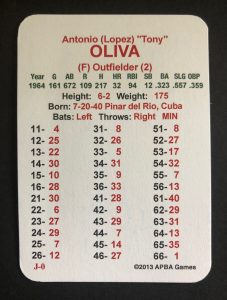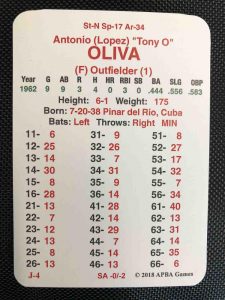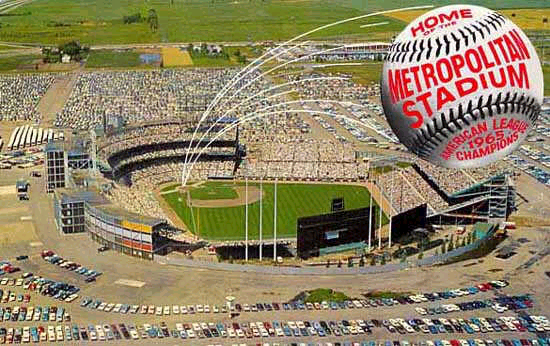
Recently, I watched a re-airing of the 1971 All-Star Game from Tiger Stadium in Detroit Michigan. Personally, I think it’s the most fascinating All-Star Game ever played. If you recall, 26 future Hall of Famers participated in that contest: 21 players, both managers, National League coach Walt Alston, Hall of Fame umpire Doug Harvey, and future Hall of Fame manager Joe Torre. With a 30+ miles an hour wind blowing out to right field, six Hall of Famers hit home runs, tying a record: Johnny Bench, Hank Aaron, Roberto Clemente, Frank Robinson, Harmon Killebrew, and Reggie Jackson. Jackson’s blast was the most memorable, smashing the standards under the rooftop lights in right center field. It’s estimated it traveled 520 feet…but for the lights getting in the way, it would have traveled out of the stadium. It was a classic game, with classic players, played in a classic ballpark.
However, something struck me as I listened to Curt Gowdy and Tony Kubek introduce the starting lineups: Tony Oliva was elected as a starter but was unable to play because of injury. Immediately I thought, that’s the epitome of Tony Oliva’s career. So often, he matched his era’s Hall of Famers swing for swing, but his body wouldn’t allow him to do it with longevity. His body left him out of the 1971 All-Star Game just as it’s left him out of the Baseball Hall of Fame.
The 1971 season was Oliva’s last hurrah. Even though his missed 38 games, he still qualified for his third and final AL batting championship with a .337 average. He missed all but ten games of 1972 recovering from knee surgery. With his return in 1973, he became the Minnesota Twins full-time designated hitter, posting three solid seasons. However, he was never the same player who who couldn’t play in the 1971 All-Star Game. By 1976, Oliva was finished at age 37, having played 15 seasons. With a late start (he wasn’t a regular until he was 25-years old) and an early retirement, Oliva was just short of the numbers he needed to make the Baseball Hall of Fame. If Tony O could have reached 2,000 hits (he had 1,917) his candidacy would be improved. If he could have hit 250 or 300 homers (he hit 220), he probably might have made it in on a veterans committee ballot. Unfortunately, the bulk of Oliva’s statistics were accumulated in eight seasons and he was never able to pile up the longevity numbers needed for Hall of Fame induction.

Yet, Tony Oliva’s eight seasons of accumulation were wonderfully dominate, especially when you consider they were done in baseball’s second deadball era. After cups of coffee with the big club in 1962 and 1963, Oliva burst on the baseball scene in 1964 with one of the best rookie seasons in history. His AL leading .323 batting average made him the first player ever to win both the Rookie of the Year Award and AL batting title. He also led the American League in hits (217), doubles (43), extra base hits (84), total bases (374), runs (109), and runs created (133). His 374 total bases tied a rookie record with Hal Trosky. Oliva even finished fourth in the AL MVP voting.
Tony Oliva’s first APBA card is fairly accurate. I project it to produce between a .317 and .326 average. In the original version of his 1964 card, Oliva had a 14 on 13, which allowed it to hit about .330. Over the years, APBA must have discovered the original card overproduced and adjusted it in the 2013 version. There’s a lot to like about Oliva’s 1964 card. First, 4-5-1-6 power numbers jump off the card. There aren’t many APBA cards with a 4 and a 5. As a matter of fact, 4s are a hard number to come by on APBA Baseball cards. The other eye-catcher on this card is the 25-7. Anytime a player has 7s on 25, 31, and 51 you know you’re looking at a potential batting champion’s card. I particularly love this card with a runner of first because anything could happen. Tony O might hit a single and steal a base, leg out a double, rip a triple into the gap, or blast a deep fly into the stands at Metropolitan Stadium. This is a wonderfully fun card that would be great in the second or third spot in any lineup.

Should Tony Oliva be in the Baseball Hall of Fame? Probably. Lord know he’s more deserving than many players who are already inducted…Harold Baines. The problem with Tony Oliva is that he flat out played like a Hall of Famer for eight seasons but he didn’t finish like a Hall of Famer. I never had the privilege of seeing him play, but I’m sure those who did were convinced Oliva was headed to Cooperstown before he was derailed by injuries. I’d say a modern day comparison would be Don Mattingly. When I saw Mattingly play, I felt like I was watching a Hall of Famer. I’m sure those who saw Oliva play felt the same. However, both players never achieved the longevity needed for a plaque in Cooperstown. Oliva needed five more productive seasons and a career that ended in 1981, not 1976. Even so, Tony O made eight All-Star teams, won three batting titles, and slashed .313/.360/.507 during his eight year heyday when he averaged 22 homers and a 5.3 WAR. But to make the Baseball Hall of Fame, longevity is needed. After the 1971 All-Star Game, Oliva only slashed .277/.331/.391 with a 0.6 WAR primarily as a DH. In the end, Tony Oliva was a talented enough player to make the Baseball Hall of Fame. Unfortunately, his body just couldn’t finish the deal.




Good day and welcome to my webpage. I’m Nannie Morris.
I have always dreamed of being a book writer but never dreamed I’d make a career of it. In college, though, I helped a fellow student who needed help. She could not stop telling me how well I had done. Word got around and someone asked me for to help them just a week later. This time they would compensate me for my work.
During the summer, I started doing research paper writing for students at the local college. It helped me have fun that summer and even funded some of my college tuition. Today, I still offer my writing skills to students.
Writing Specialist – Nannie – http://www.queronaao.com Band